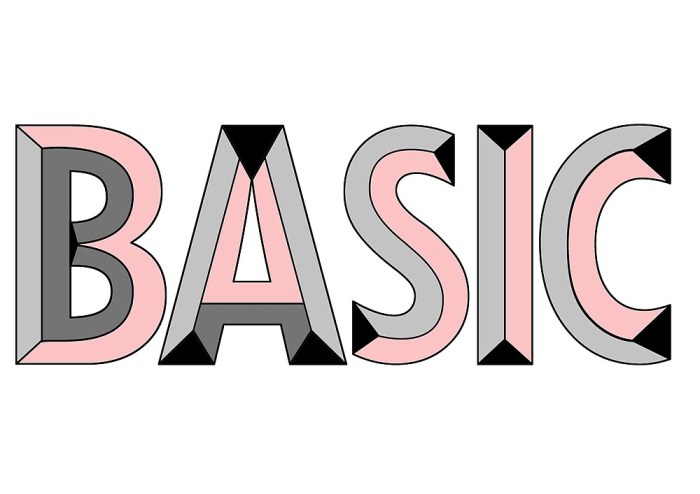Is ch3nh3cn acidic basic or neutral – The chemical world is a fascinating realm where substances exhibit diverse properties, and understanding their acidic, basic, or neutral nature is crucial. Among these compounds, CH3NH3CN stands out, and this article delves into its molecular structure and properties to determine whether it’s acidic, basic, or neutral.
Get ready to embark on an intriguing journey into the realm of chemical characterization.
The molecular structure of CH3NH3CN, with its unique arrangement of atoms, plays a pivotal role in shaping its chemical behavior. By examining its intricate architecture, we can gain insights into its proclivity to donate or accept protons, ultimately revealing its acidic or basic nature.
Understanding Chemical Properties: Is Ch3nh3cn Acidic Basic Or Neutral

In chemistry, acidity, basicity, and neutrality refer to the properties of substances that determine their behavior in aqueous solutions. These properties are crucial for understanding chemical reactions and the interactions between different substances.
Acidity
Acids are substances that release hydrogen ions (H+) when dissolved in water. They typically have a sour taste and react with metals to produce hydrogen gas. Common examples of acids include hydrochloric acid (HCl), sulfuric acid (H2SO4), and acetic acid (CH3COOH).
Basicity
Bases are substances that release hydroxide ions (OH-) when dissolved in water. They typically have a bitter taste and feel slippery to the touch. Common examples of bases include sodium hydroxide (NaOH), potassium hydroxide (KOH), and ammonia (NH3).
Neutrality
Neutral substances are those that do not release either hydrogen ions or hydroxide ions when dissolved in water. They have a pH of 7, which is the midpoint between the acidic and basic ranges. Examples of neutral substances include pure water, sodium chloride (NaCl), and sugar (C12H22O11).
Molecular Structure and Properties

Molecular Structure of CH3NH3CN
CH3NH3CN is a zwitterionic compound, meaning it contains both positive and negative charges within the same molecule. The structure of CH3NH3CN can be represented as follows:
The positive charge is located on the nitrogen atom of the ammonium group (NH3+), while the negative charge is located on the carbon atom of the cyanide group (CN-).
Influence of Molecular Structure on Chemical Properties
The molecular structure of CH3NH3CN influences its chemical properties in several ways. The positive charge on the ammonium group makes CH3NH3CN a good nucleophile, meaning it can donate electrons to other molecules. The negative charge on the cyanide group makes CH3NH3CN a good electrophile, meaning it can accept electrons from other molecules.
The zwitterionic nature of CH3NH3CN also makes it a good solvent. Zwitterionic solvents are able to dissolve both polar and nonpolar compounds. This is because the positive and negative charges on the zwitterion can interact with both polar and nonpolar molecules.
Acid-Base Properties
The acid-base properties of CH 3NH 3CN can be determined based on its molecular structure.
Lewis Acid-Base Theory
According to Lewis acid-base theory, an acid is a substance that can accept an electron pair, while a base is a substance that can donate an electron pair. In CH 3NH 3CN, the nitrogen atom in the -CN group has a lone pair of electrons that can be donated, making it a Lewis base.
Brønsted-Lowry Acid-Base Theory
In Brønsted-Lowry acid-base theory, an acid is a substance that can donate a proton (H +), while a base is a substance that can accept a proton. CH 3NH 3CN does not have any protons that can be donated, so it is not a Brønsted-Lowry acid.
Conclusion, Is ch3nh3cn acidic basic or neutral
Based on the Lewis acid-base theory, CH 3NH 3CN is a Lewis base because it can donate an electron pair. However, it is not a Brønsted-Lowry acid because it cannot donate a proton.
Comparison with Other Compounds
CH 3NH 3CN shares similar chemical properties with other compounds containing the -NH 3+group, such as ammonium (NH 4+) and methylammonium (CH 3NH 3+). These compounds all exhibit acidic behavior due to the ability of the -NH 3+group to donate a proton (H +).
Acid-Base Properties
The acid-base properties of CH 3NH 3CN can be compared to those of other similar compounds, such as:
- Ammonium (NH4+): Both CH 3NH 3CN and NH 4+are weak acids. They can donate a proton to a strong base, such as hydroxide (OH –), to form the corresponding conjugate base (CH 3NH 2CN or NH 3).
- Methylammonium (CH3NH 3+): CH 3NH 3CN and CH 3NH 3+have similar acid-base properties. They both exhibit weak acidity and can donate a proton to strong bases.
The acid-base strength of these compounds depends on the stability of their conjugate bases. The more stable the conjugate base, the weaker the acid. In the case of CH 3NH 3CN, the conjugate base (CH 3NH 2CN) is relatively stable, which contributes to the compound’s weak acidity.
Applications and Implications

Potential Applications
The acid-base properties of CH3NH3CN make it a promising candidate for various applications, including:
- Proton transfer reactions:CH3NH3CN can act as a proton donor or acceptor, facilitating proton transfer reactions in chemical synthesis and catalysis.
- Buffer solutions:CH3NH3CN can be used as a buffer to maintain a stable pH in solutions, making it useful in biochemical and analytical applications.
- Solvent:CH3NH3CN is a polar aprotic solvent that can dissolve a wide range of compounds, including organic and inorganic salts. This property makes it useful in various chemical reactions and extractions.
Implications in Various Fields
The chemical properties of CH3NH3CN have implications in several fields, such as:
- Organic chemistry:CH3NH3CN is a versatile reagent in organic synthesis, particularly in reactions involving nucleophilic substitution and elimination.
- Pharmaceutical chemistry:CH3NH3CN can be used as a solvent or excipient in drug formulations, affecting the solubility, stability, and bioavailability of drugs.
- Environmental chemistry:The acid-base properties of CH3NH3CN influence its environmental fate and toxicity, making it important to consider in pollution control and remediation strategies.
FAQ Resource
Is CH3NH3CN a strong acid or base?
CH3NH3CN is neither a strong acid nor a strong base. It exhibits weak acidic and basic properties.
What factors influence the acid-base behavior of CH3NH3CN?
The acid-base behavior of CH3NH3CN is influenced by its molecular structure, the presence of both acidic and basic functional groups, and the reaction environment.
Can CH3NH3CN act as both an acid and a base?
Yes, CH3NH3CN exhibits amphoteric properties, allowing it to behave as both an acid and a base depending on the reaction conditions.

